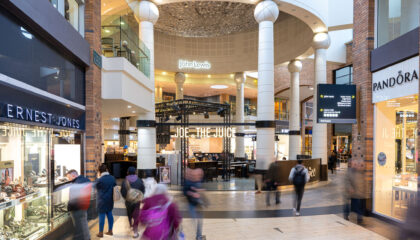THE WORKMAN PROJECT MANAGEMENT BTR SERIES 05
Cinema, gym, nursery, green outdoor space, Amazon box room or private dining? These may seem like vital elements of any build-to-rent (BTR) scheme. However, they are merely window dressing. The fundamental technical aspects of the building structure and fabric must meet the investor’s specification and highest institutional standards. Without this, even the most stylish, dual-aspect, naturally ventilated space becomes irrelevant.
The ongoing cladding scandal has had a devastating impact, leaving investors deeply concerned. As a result, the development monitor’s role and their influence on quality control have come into sharp focus.
Environmental performance rarely stops at statutory compliance. Investors expect exemplar sustainability standards to attract tenants, protect liquidity and unlock green financing. An experienced development monitor with sound comprehension of Net Zero and ESG can help investors push the boundaries and future-proof their assets.
The right specialists, at the right time
The development monitor, with a strong understanding of the investor’s perspective, drives product quality. They also ensure the procurement process aligns with the business plan in terms of time, cost, specification and contractual reliance.
The experienced development monitor partners with experts like fire engineers, cladding specialists, acoustics engineers, and construction lawyers. This collaboration ensures they access the right expertise at the right time. As a result, the scheme is designed and delivered strictly to the investor’s criteria. By building strong relationships with well-established specialists, development monitors can quickly identify and resolve issues along the pathway.
Procurement in a post-Brexit world
The impact of Brexit on UK construction procurement is insidious. Techniques need to be adopted that manage supply chain risk, maintain programmes, and protect the investor’s income forecasts.
Moving towards on-shoring, UK suppliers, and adopting a ‘just-in-case’ approach to procurement, are all strategies that can help secure the procurement process in the post-Brexit world.
The rise of modular BTR
Modular BTR is increasingly being considered as a way to manage specification uniformity and compliance, while achieving increased speed to market.
By manufacturing the buildings inside a controlled factory environment, modules can be delivered to site fully kitted out with windows, exterior walls, electric wiring, and more. Evidence suggests the time advantage is considerable, with ‘stacking’ techniques now tried and tested.
Apartments and their inherent components can be fully certified and accredited, and backed by the UK’s leading certification bodies.
This is certainly an area gaining ground in the UK, with firms such as Greystar having already made notable investments in the method. The 546 modular apartment scheme in Croydon, developed by Greystar in partnership with Henderson Park, is a significant statement of confidence in modular as a solution.
Having said that, with the benefits of new technology, also comes risk. This means the development monitor needs to upskill and learn the nuances of modular, ensuring standards enable every apartment to be fundable and insurable.
So yes, glossy high-quality kitchens, cinema rooms and gyms are important, but it’s what you can’t see and how you deliver it that underwrites the investment. Alignment of the specification and procurement method with evolving institutional expectations is key to the development monitor’s role.
By Richard Taylor, Partner, Workman Project Management
Read more about our intelligent building technology IBOS
Read more about our ESG services



